Genome-wide expression analysis of soybean MADS genes showing potential function in the seed development
- PMID: 23638026
- PMCID: PMC3640087
- DOI: 10.1371/journal.pone.0062288
Genome-wide expression analysis of soybean MADS genes showing potential function in the seed development
Abstract
The MADS family is an ancient and best-studied transcription factor and plays fundamental roles in almost every developmental process in plants. In the plant evolutionary history, the whole genome duplication (WGD) events are important not only to the plant species evolution, but to expansion of members of the gene families. Soybean as a model legume crop has experience three rounds of WGD events. Members of some MIKC(C) subfamilies, such as SOC, AGL6, SQUA, SVP, AGL17 and DEF/GLO, were expanded after soybean three rounds of WGD events. And some MIKC(C) subfamilies, MIKC* and type I MADS families had experienced faster birth-and-death evolution and their traces before the Glycine WGD event were not found. Transposed duplication played important roles in tandem arrangements among the members of different subfamilies. According to the expression profiles of type I and MIKC paralog pair genes, the fates of MIKC paralog gene pairs were subfunctionalization, and the fates of type I MADS paralog gene pairs were nonfunctionalization. 137 out of 163 MADS genes were close to 186 loci within 2 Mb genomic regions associated with seed-relative QTLs, among which 115 genes expressed during the seed development. Although MIKC(C) genes kept the important and conserved functions of the flower development, most MIKC(C) genes showed potentially essential roles in the seed development as well as the type I MADS.
Conflict of interest statement
Figures
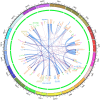



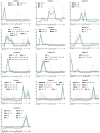



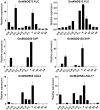
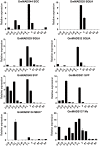


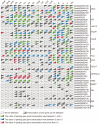
References
-
- Passmore S, Maine GT, Elble R, Christ C, Tye BK (1988) Saccharomyces cerevisiae protein involved in plasmid maintenance is necessary for mating of MAT alpha cells. J Mol Biol 204: 593–606. - PubMed
-
- Norman C, Runswick M, Pollock R, Treisman R (1988) Isolation and properties of cDNA clones encoding SRF, a transcription factor that binds to the c-fos serum response element. Cell 55: 989–1003. - PubMed
-
- Yanofsky MF, Ma H, Bowman JL, Drews GN, Feldmann KA, et al. (1990) The protein encoded by the Arabidopsis homeotic gene agamous resembles transcription factors. Nature 346: 35–39. - PubMed
-
- Schwarz-Sommer Z, Huijser P, Nacken W, Saedler H, Sommer H (1990) Genetic Control of Flower Development by Homeotic Genes in Antirrhinum majus. Science 250: 931–936. - PubMed
-
- Becker A, Theissen G (2003) The major clades of MADS-box genes and their role in the development and evolution of flowering plants. Mol Phylogenet Evol 29: 464–489. - PubMed
Publication types
MeSH terms
Substances
Associated data
- Actions
- Actions
LinkOut - more resources
Full Text Sources
Other Literature Sources
Miscellaneous

